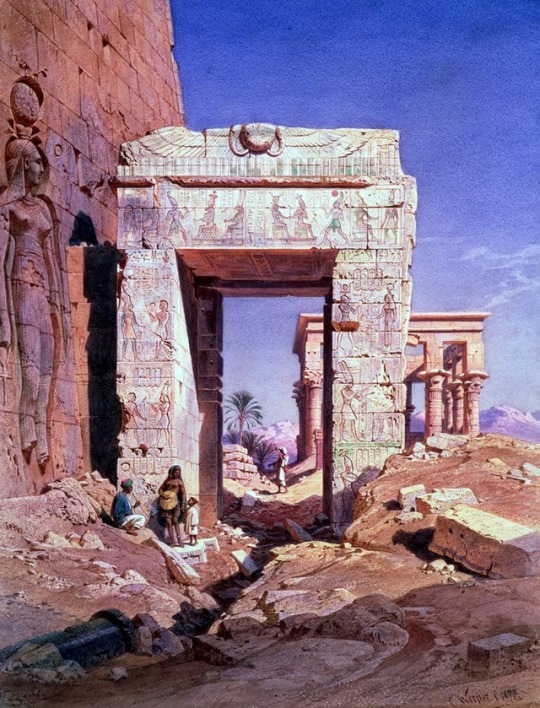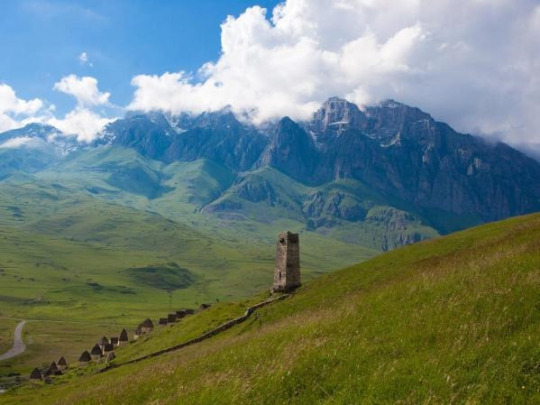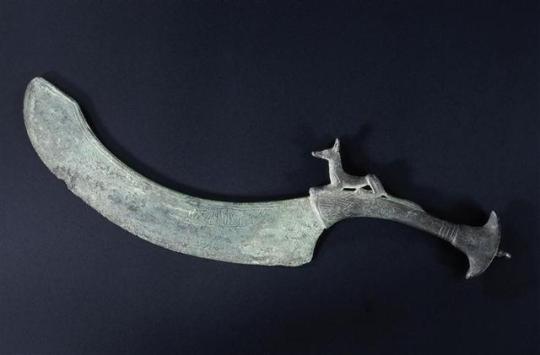Photo

Doorway from Temple of Isis to temple called Bed of the Pharaohs
Island of Philae
by Carl Friedrich Heinrich Werner (German, 1808 - 1894)
3K notes
·
View notes
Text

The Party on the Stairs, by Adelaide Claxton, ca 1875
4K notes
·
View notes
Text
Autumnal equinox, Mehregan, a time to reaffirm our allegiance and friendship with the Immortals,
The Avestan*Miθra-kāna, modern Persian Mehrägān is an ancient Zoroastrian Autumnal festival, closely connected to the equinox, and dedicated to Miθrá/Mithra(reciprocity, mutual bond, friendship with the Gods.)
The celebration of Baga Miθrá in the 7th month of the Achaemenid calendar Baga-yadi– also coincided with celebrations for the autumnal equinox.
Equinox is the astronomical phenomenon most clearly linked to the concept of “equity, balance, duty, fidelity, and genuine friendship.” Zoroastrian religiosity is allegiance to the Gods, commitment to virtue and wisdom, and having unshakeable faith in a higher destiny or mission.
In Zoroastrianism, mortal man is a friend of the Gods, a charioteer of the Invincible Sun, a bridge between the primal, and the boundless ideal of the Immortals.
Zoroastrian religiosity is NOT rooted in any kind of fear of hell or slavery to an all-powerful Despotic God. Instead Zoroastrian religiosity is about believing in Gods as Friends/Allies Miθrá. The Mazda Worshipping Religion teaches commitment to a luminous vision, and faith in a higher mission, destiny.
To believe in the Gods as allies/friends means that Immortal Gods, and men are bound together through “wisdom, virtue, an eternal quest for excellence, light and truth.” Mehrägān is a time to re-examine our allegiance to the Immortal Gods, to see if we are committed to our higher destiny or Not, to see if we are Loyal to the Powers of light/the Invincible Sun, and finally if we are fulfilling our contract/duties toward the Brilliant Immortals.
Mehrägān has a dominant solar warrior aspect, and marks the triumph of Justice over usurpation, and imposter. The victory of the epic healer hero of the ancient Aryans thraætaoôna over the Mesopotamian tyrant dragon Żaḥḥāk is celebrated during Mehrägān. The moral message of Mehrägān is that Dominion and Power will go back to its rightful heirs, and at last Kingship will be for the downtrodden noble ones, the true allies, friends of the Gods.
Ancient Zoroastrian Sovereigns marked Mehrägān as an official occasion in which the king assigned “duties and assignments. We have to fundamentally understand that Zoroastrianism is not about a false sense of entitlements, BUT about Duties toward the Brilliant Immortals, and fulfilling our higher destiny/contract with the Gods.
Ancient Greeks attributed the epithet mesítēs to Miθrá(according to Plutarch, De Iside et Osiride, 46,) and understood Mithrá to act as an arbitrator/mediator on the cosmological, eschatological, and anthropological levels (Belardi, pp. 32-45.)
The importance of Mehrägān was not lost to early Persian converts to islam. For example the first Persian covert to islam, Behrouzán later called Salman the Persian has said that “In Magi times we used to say that Gods have created an ornament for mortals, of rubies on Nowruz, of emeralds on Mehrajān. Therefore these two days excel all other days in the same way as these two jewels excel all other jewels” (cf. similar point in Ps-Jāḥeẓ, Maḥāsen, p. 361).
Thus the two poles of the religious Zoroastrian year were understood to be the vernal and autumnal equinoxes. Mehrägān is a time for exchanging gifts, drinking great amounts of red wine, and holding lavish banquets in honor of the Immortals.
I like to conclude by the following words from Counsels to PŌRYŌTKĒŠĀN, the “counsels of the foremost or ancient sages.” The passage is also a commentary to the first three words at.čá töi vaæm “may we be like you” in Yasna 30.9 of the Gathas; “I have come from the unseen world, I belong to Öhrmazd, I belong to the Gods, not to the demons, to the good, not to the wicked. I am a man, not a demon. My mother is Spandarmad, (the Earth), and my father is Öhrmazd. My humanity is from Martyæ and Martyánæ. I belong to the Auspicious Brilliant Immortals. I have no bonds to the Lord of flaws, and his demons of darkness and gloom.
#Equinox#Fall#Sun#Solar#Mithra#Aryan#Zoroastrianism#Mazdayasna#Ahura Mazda#Aesir#Avesta#Gathas#Vedas#Poetic edda#indo european#Iranian#Iran#Zarathustra#sasanian#Persia#ostrogoths#Scythians#Celtic#Germanic#Odin#Ansuz#Titans#Asura#Yazata#Yazdanism
11 notes
·
View notes
Photo






dargavs, in north ossetia, is a necropolis dating to pagan times with 90+ small dwellings each housing a family crypt. a watchtower looks after and protects the dead residents.
1K notes
·
View notes
Photo


Embalmer’s knife with Anubis figure on the papyrus-shaped handle (“Minmesout”), the embalmer’s name, on the blade (bronze). New Kingdom, 19th Dynasty, ca. 1292-1189 BC. Now in the Louvre. Photos: Georges Poncet.
2K notes
·
View notes
Text

Art by Paul Lehr for Three Trips in Time and Space by Niven, Vance, Brunner (Dell, 1974)
241 notes
·
View notes
Photo

A drawing of a dragon copied from a manuscript of the Yi ethnic group (formerly known as Lolo) of China and Southeast Asia. Mythical monsters. 1886.
470 notes
·
View notes
Photo

Carl Blechen (1798-1840), Gotische Kirchenruine (Gothic Church Ruins), 1826
265 notes
·
View notes
Photo

Yellow dragon. Songs of China. 1898. Sheet music cover.
2K notes
·
View notes
Text







Sasanian silver plates.



These are amazing and quite inherent to western civilization as well. Why is this great and very important Empire of Aryan history, usually ignored?
People like the Ostrogoths, who contributed hugely to the culture that rised up where classical Rome fell, were often allies of the Sasanians in war against Rome, and likely took huge influence in many ways. Possibly why the worship of Aesir(Ahura) comes from "Asia"?
#sasanian#Empire#indo european#Aryan#Zoroastrianism#Iran#Iranian#Osgrogoths#Mazdayasna#Silver plates
39 notes
·
View notes









